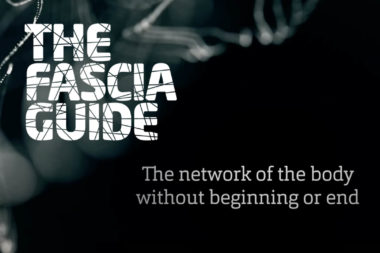

Fascia is nothing new!
Fascia is also well-known within osteopathic treatment forms, not only as collagen membranes around organs and muscles but as a multifaceted tissue with significance for the body’s physiology as a whole. The founder of osteopathy, Andrew Taylor Still, understood this already in the late 1800s. He was the first to describe that Fascia contains nerve receptors. Even though one could not explain what is now known about its components and function, there was an understanding of the whole and Fascia’s importance and reactions during treatment. Today, we have more knowledge about how Fascia is structured and its basic components. As a result, we understand that Fascia is involved in EVERYTHING that happens in our body!
For a long time, Fascia was considered to be a “passive,” not very “alive,” tissue that simply provided mechanical support for other more interesting structures and organs in the body. It was associated with the thick white membranes that surround large muscle groups, especially in the back and abdomen (and is still thought of this way by those who have not embraced new Fascia research). These collagen-rich membranes are clearly visible and can be dissected away in layers. But Fascia also has a more invisible part, consisting of very thin collagen fibers and a flow, or gel, of water bound to, among other things, hyaluronic acid between the collagen fibers, but also a more invisible flow of electrons, energy! Collagen and water act as semiconductors and conduct electrons. This looser, more fluid type of Fascia is present around every cell in the body.
Therefore, Fascia is an incredibly heterogeneous and anisotropic tissue (having different properties in different directions) and is not a passive “white membrane” around a muscle. It has different compositions and properties depending on where it is and how it is loaded. It is vital and essential for all functions in the body, down to the smallest cellular and molecular levels, and is not limited to the force-transferring and lubricating functions in the musculoskeletal system, or to separating and holding organs in place, as most people associate with Fascia. The network and continuity of Fascia allow every cell in the body to communicate and signal in many different ways, via molecules, ions, pressure, vibrations, light. Hyaluronic acid, for example, which is an important component that binds water in Fascia, is strongly affected by vibrations, pressure, pH, temperature, etc.
Taking a muscle as an example, it consists of fascia containing muscle cells responsible for contraction. Around each muscle cell, around bundles of cells, and around the entire muscle, there is a continuous fascia, but with a slightly different composition, and everything is in contact, even between the “layers”. It is a continuous, interconnected network. It also builds up other tissues and organs in a similar way, including the nervous system and around the brain and spinal cord. You cannot touch or treat the body in any way without touching and affecting the fascia. Everything you add to the body, what you eat, every movement, force, energy, light from outside affects the fascia. Even forces from within, your thoughts and mood, have an impact on the fascia.
So, what is the difference between connective tissue and fascia? Actually, there is no difference at all. Sometimes connective tissue is interpreted as a broader term as it also includes cartilage and bone tissue. While others argue that even bone and cartilage are fascia. In fact, if you look at the origin and composition, bone and cartilage are also fascia. One could say that apart from the mineral content of the skeleton, it is a question of the proportions of the components involved. If you remove the minerals from a bone, it becomes very soft and pliable.
It is important to understand the enormous significance of Fascia for our well-being, not only in terms of movement and posture, but also in how it participates in all processes in the body, including communication between cells, transportation, lymph flow, inflammation, healing processes, pain, scar formation, etc. All diseases and injuries, physical or mental, affect Fascia and vice versa, diseases are affected by Fascia.
Researchers are not entirely in agreement on terminology and definitions, using different terms but meaning the same thing. However, all agree on how important Fascia is and how it has been overlooked and neglected throughout modern medical education. The white membrane of connective tissue that is cut away and discarded during dissections to focus on a “more important” organ. How will anyone ever open their eyes and understand its significance?



















































